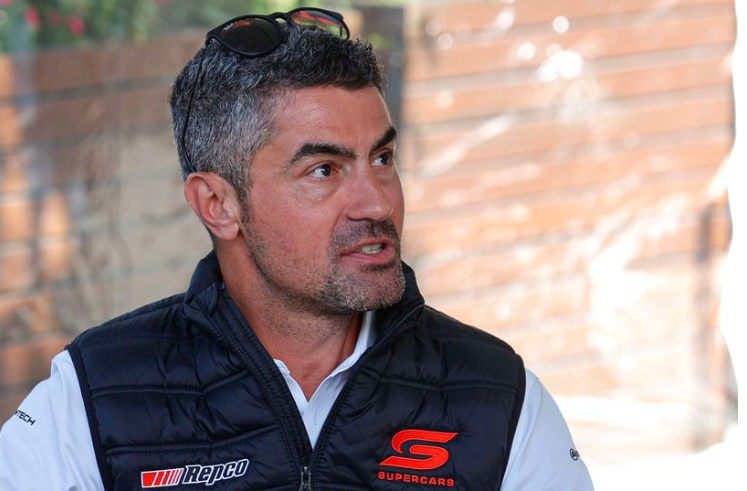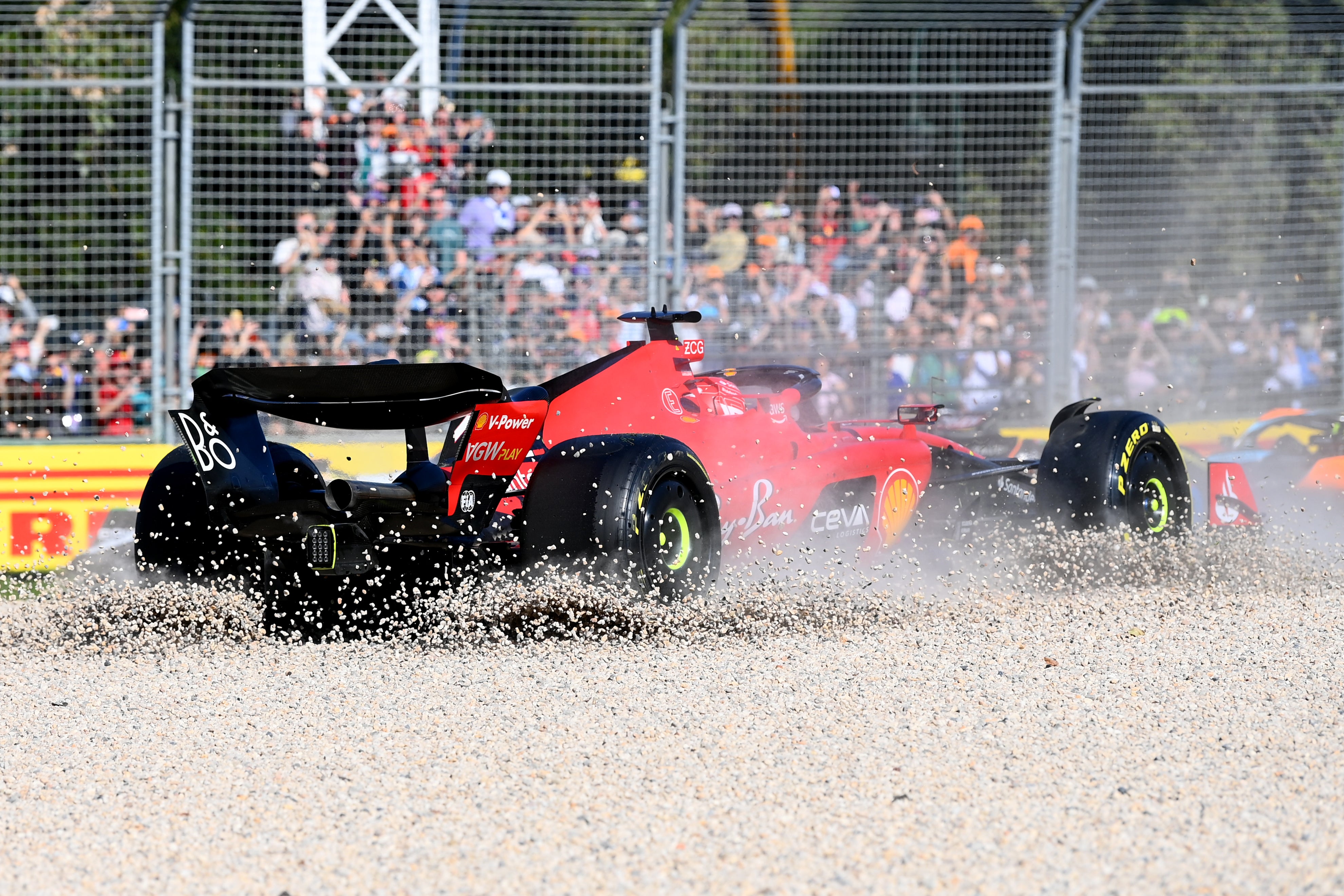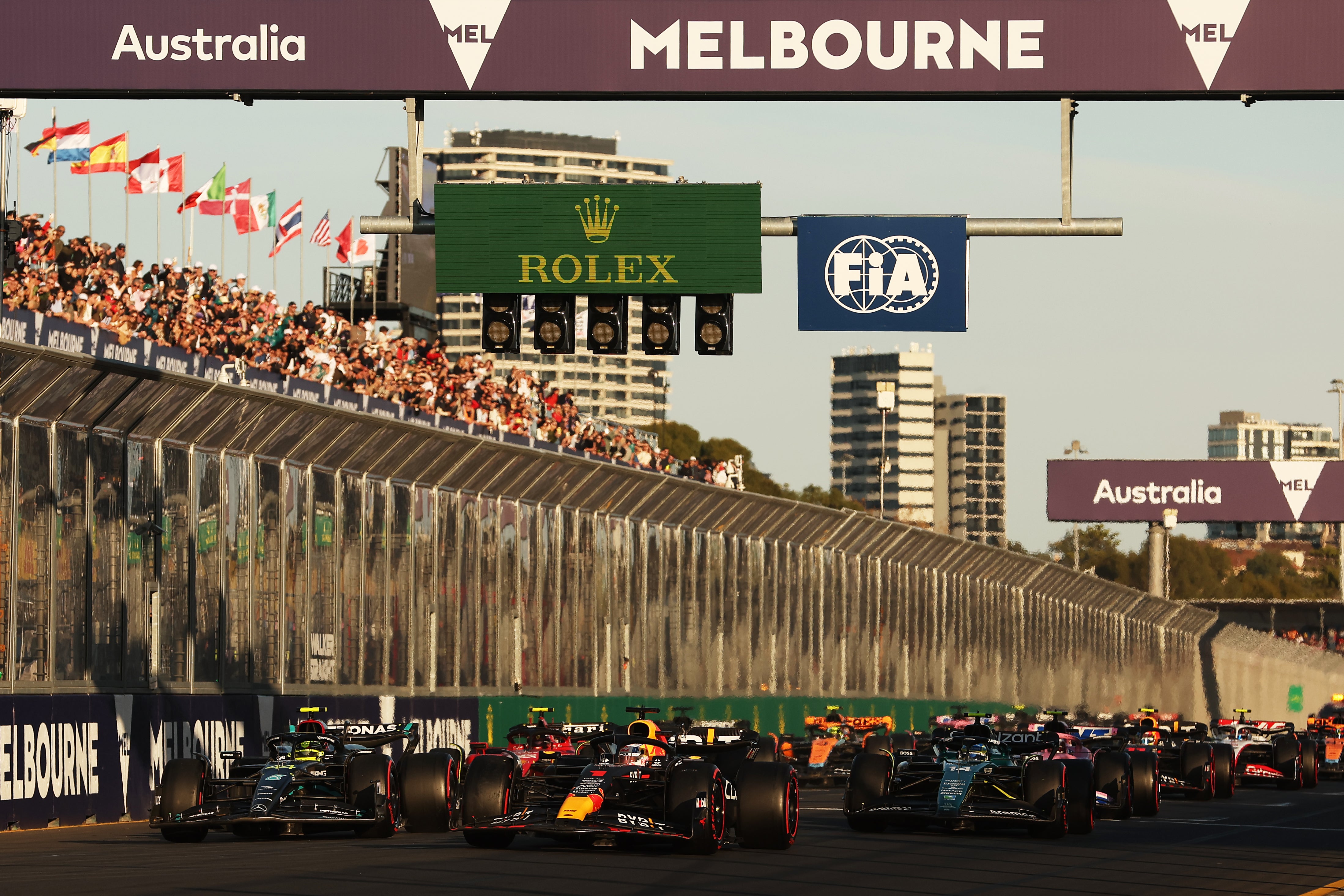Chaotic Australian Grand Prix reveals the dilemma at the heart of F1’s future
A record three red flags were thrown during Sunday’s action-packed race in Melbourne, won by Max Verstappen as only 12 cars completed the 58-lap grand prix, but were they enforced for the right reasons?
Your support helps us to tell the story
From reproductive rights to climate change to Big Tech, The Independent is on the ground when the story is developing. Whether it's investigating the financials of Elon Musk's pro-Trump PAC or producing our latest documentary, 'The A Word', which shines a light on the American women fighting for reproductive rights, we know how important it is to parse out the facts from the messaging.
At such a critical moment in US history, we need reporters on the ground. Your donation allows us to keep sending journalists to speak to both sides of the story.
The Independent is trusted by Americans across the entire political spectrum. And unlike many other quality news outlets, we choose not to lock Americans out of our reporting and analysis with paywalls. We believe quality journalism should be available to everyone, paid for by those who can afford it.
Your support makes all the difference.Surely, the irony was not lost on some. An absorbing, highly-charged grand prix weekend down under started with bickering over the future of the Formula 1 race weekend. So much so in fact, amid a potential change of the sprint weekend structure, that reigning world champion Max Verstappen threatened to walk away from the sport.
By Sunday evening, with the race result finally confirmed just past 11pm in Melbourne, driver debate had turned to the throwing of red flags and the FIA’s justification for such actions. Three red flags were thrown in an action-packed race: an F1 record.
And who was present looking on, returning to the paddock for the first time since that day? That’s right, Michael Masi: the highly-criticised Australian at the helm for the Abu Dhabi controversy which concluded the 2021 season.
Masi was there at Albert Park in his new role as the chairman of the Australian Supercars series yet was spotted embracing, among others, Red Bull sporting director Jonathan Wheatley on Thursday. Needless to say, any welcome was not so warm at Mercedes.
Since that bungling of the safety car procedure, which resulted in Verstappen winning his first World Championship and Lewis Hamilton missing out on a record-breaking eighth crown, F1 has found itself in a wrangle.
Such a disputation was perhaps inevitable given the sport’s booming popularity in the Drive to Survive era. Namely, the parity between the show and the spectacle. Sport vs entertainment.
By the absolute letter of the law? Or for the salivation of the masses watching around the world?
Why such a school of thought? Let’s take Sunday’s race first – and each under-the-spotlight incident in isolation.

Charles Leclerc’s first-lap retirement after contact with Lance Stroll was, rightly, decreed a racing incident. With his Ferrari beached in the gravel, a safety car came out with no stoppage necessary as the car was removed from the circuit.
The first red flag, as a result of Alex Albon’s spin and shunt across the gravel and into the wall, was thrown on lap seven. Race leader George Russell pitted under the safety car, as did Carlos Sainz from fourth, but both bold moves were scuppered by the stopping of the race.
The FIA stated that due to the spewing of gravel in a high-speed section of the street circuit, sufficient time was needed without cars at the scene to remove the debris.
The second red flag came late on, with four laps remaining. Kevin Magnussen hit the wall and his rear-right tyre cannoned off his stricken Haas. Again, the FIA threw the race-pausing flag, with the debris from the tyre the reason once more.

The biggest loser here was undoubtedly Verstappen, who had an eight-second lead wiped out. Fernando Alonso, too, expressed surprise at the decision over team radio.
The resulting finale of a two-lap shootout from a standing start, which included Carlos Sainz spinning Fernando Alonso and the Alpine cars of Esteban Ocon and Pierre Gasly taking each other out, was frenetic. Engrossing. Thrilling entertainment. A third – and incontestable – red flag was thrown, as Verstappen took the chequered flag effectively behind the safety car.
But were the race stoppages necessary? And were they even dangerous? By the end, only 12 cars had completed the 58-lap race.
Both Verstappen and Russell vented their dissatisfaction at the red-flag bonanza. Understandable, perhaps, given they had the most to lose. Verstappen and Gasly pointed towards the lack of temperature obtainable in the tyres in the effective “formation lap” behind the safety car before the standing start. As such, a lack of grip makes collisions and incidents more likely.
But Lando Norris, who only prospered as he finished sixth, spoke to the crux of the matter.

“I don’t feel like it’s fair for a lot of people who have done a good job and they get taken out,” the McLaren driver said.
“Because they try and put on a show, you just get unlucky, and everything can get taken away from you all of a sudden. So I just think that side of it, I just think it needs a small rethink."
That’s the phrase at the top of the agenda right now: put on a show. Exactly the mantra behind F1 boss Stefano Domenicali’s willingness to change the race weekend format down the line, with the first of six sprint races at Baku in a month’s time subject to a potential late change involving an additional qualifying session.
More racing, on the whole, is a good thing for the majority. The general consensus is that three practice sessions a weekend is one too many. Modifications can be made. But will they be minor or major changes?
The alternative as the sun set in Melbourne was clear. Either the race finishes behind the safety car, as we saw to the displeasure of many in Monza last year (Some would argue that is simply the rulebook being enforced correctly.) Or perhaps a red flag is thrown but a rolling start resumes the race, largely negating the lack of tyre temperature. Maybe even an additional lap behind the safety car to help on that front.
But all of those resolutions are not as good for the aesthetics. The FIA will, of course, say the red-flag calls were all taken from a safety perspective. And they might well be right: safety has to be the priority.
Yet the sport’s governing body can, and must, be more efficient in their decision-making overall. Fernando Alonso’s podium reinstatement past midnight in Saudi Arabia was painfully slow – and spoke to a governance seemingly unaware of the complexity of their own rules.
Similarly, the race result in Australia was only confirmed at 11pm local time, when an appeal from Haas was rejected. That was launched due to the restoration of the grid order at the final standing start. The right decision it seems, similar to Silverstone last year as the cars had not passed the first sector line, but it took a big chunk of time.
A five-second penalty for Sainz, due to his collision with Alonso, also seemed overly harsh given the net result was obviously going to be a drop to outside the top 10 from fourth. The Spaniard, usually so calm, was furious post-race on a day when Ferrari took home zero points.
Needless to say, the stewards room was busy as light fell at Albert Park. And while F1 finds itself in a period of worldwide ascension, with more races and glamorous locations than ever before, the crux of the sport-spectacle dilemma shows no signs of waning.
How F1 and the FIA negotiate the balance of power will set the tone for the 20 remaining races this season.






Join our commenting forum
Join thought-provoking conversations, follow other Independent readers and see their replies
Comments